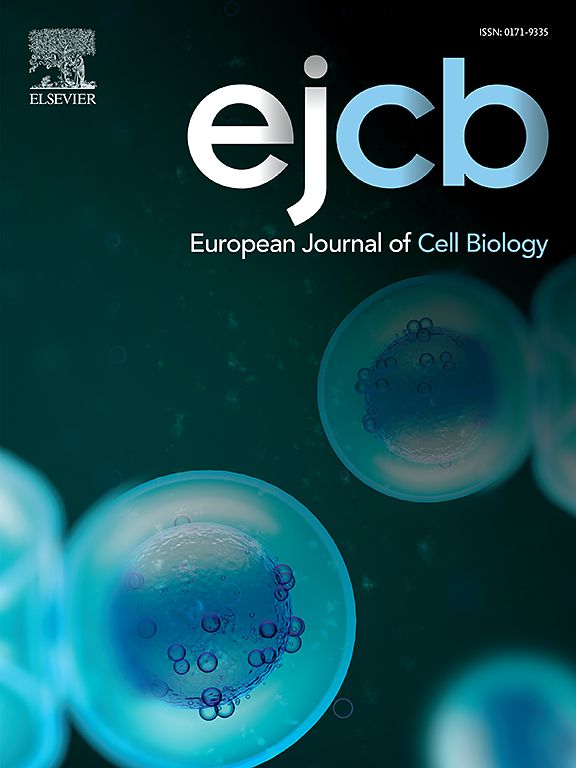角蛋白异二聚化的综合计算机分析
IF 4.3
3区 生物学
Q2 CELL BIOLOGY
引用次数: 0
摘要
角蛋白是最大和最多样化的中间丝蛋白群,为上皮细胞提供结构完整性和机械强度。虽然它们作为异源二聚体的组装已经很好地建立起来,但角蛋白二聚化的特定配对偏好和分子基础在很大程度上仍然未知。在这里,我们采用高通量计算管道,集成了AlphaFold multitimer (AFM)建模,VoroIF-GNN相互作用界面质量评估,相互作用能量计算以及与实验解决结构的结构比较,系统地研究角蛋白异二聚化,并为进一步分析中间纤维组装提供指导。为了验证我们的计算机方法,我们将充分研究的波形蛋白同型二聚体作为参考。预测的波形蛋白同二聚体与现有的实验数据非常吻合,支持了我们的建模管道的准确性。我们的研究结果表明,角蛋白异二聚体通常具有较低的相互作用能,表明比它们的同型二聚体更有利的相互作用,并且表现出与已知的中间丝结构非常相似的结构构型。不同角蛋白对的比较分析也揭示了线圈1区域对二聚体稳定性的重要性。此外,通过对生理和病理条件下皮肤空间转录组学数据的分析,证明了角蛋白配对的共表达。总的来说,这些发现强调了典型角蛋白异二聚化的结构原理,并建立了一个强大的计算工作流来阐明角蛋白异二聚化。本文章由计算机程序翻译,如有差异,请以英文原文为准。
Comprehensive in silico analyses of keratin heterodimerisation
Keratins are the largest and most diverse group of intermediate filament proteins, providing structural integrity and mechanical strength to epithelial cells. Although their assembly as heterodimers is well established, the specific pairing preferences and molecular basis of keratin dimerisation remain largely unknown. Here, we employ a high-throughput computational pipeline that integrates AlphaFold Multimer (AFM) modelling, VoroIF-GNN interaction interface quality assessment, interaction energy calculations and structural comparisons with experimentally solved structures to systematically investigate keratin heterodimerisation and to provide a guideline for further analysis of intermediate filament assembly. To validate our in silico approach, we include the well-studied vimentin homodimer as a reference. The predicted vimentin homodimer shows strong agreement with available experimental data, supporting the accuracy of our modelling pipeline. Our results show that keratin heterodimers generally have lower interaction energies, indicating more favourable interactions, than their homodimer counterparts, and exhibit structural configurations that closely resemble known intermediate filament structures. Comparative analyses of different keratin pairs also reveal the importance of the coil 1 region for dimer stability. Furthermore, co-expression of keratin pairings is demonstrated by analysis of spatial transcriptomics data in skin under physiological and pathological conditions. Collectively, these findings highlight structural principles underlying canonical keratin heterodimerisation and establish a robust computational workflow for elucidating alternative keratin dimerisations.
求助全文
通过发布文献求助,成功后即可免费获取论文全文。
去求助
来源期刊

European journal of cell biology
生物-细胞生物学
CiteScore
7.30
自引率
1.50%
发文量
80
审稿时长
38 days
期刊介绍:
The European Journal of Cell Biology, a journal of experimental cell investigation, publishes reviews, original articles and short communications on the structure, function and macromolecular organization of cells and cell components. Contributions focusing on cellular dynamics, motility and differentiation, particularly if related to cellular biochemistry, molecular biology, immunology, neurobiology, and developmental biology are encouraged. Manuscripts describing significant technical advances are also welcome. In addition, papers dealing with biomedical issues of general interest to cell biologists will be published. Contributions addressing cell biological problems in prokaryotes and plants are also welcome.
 求助内容:
求助内容: 应助结果提醒方式:
应助结果提醒方式:


